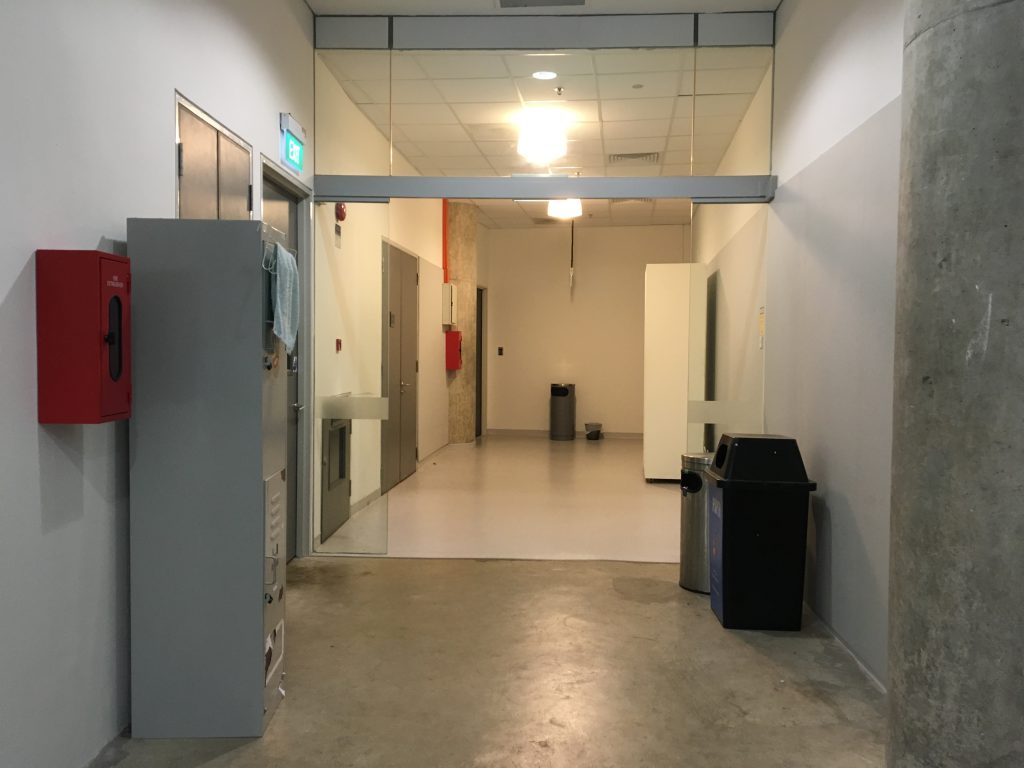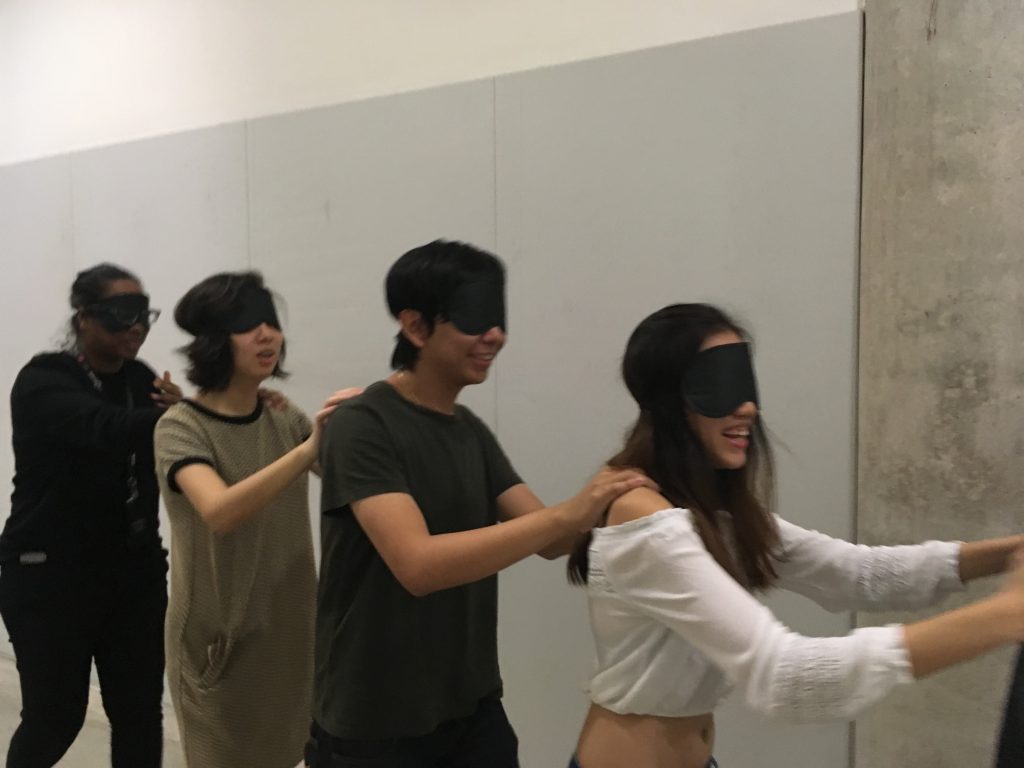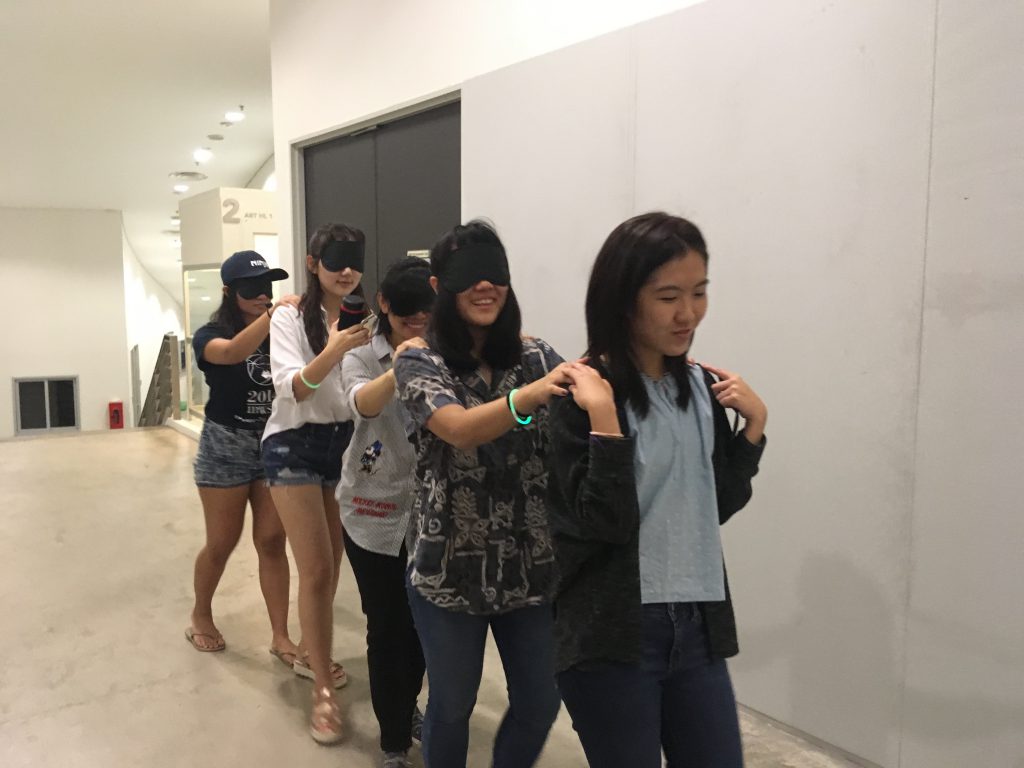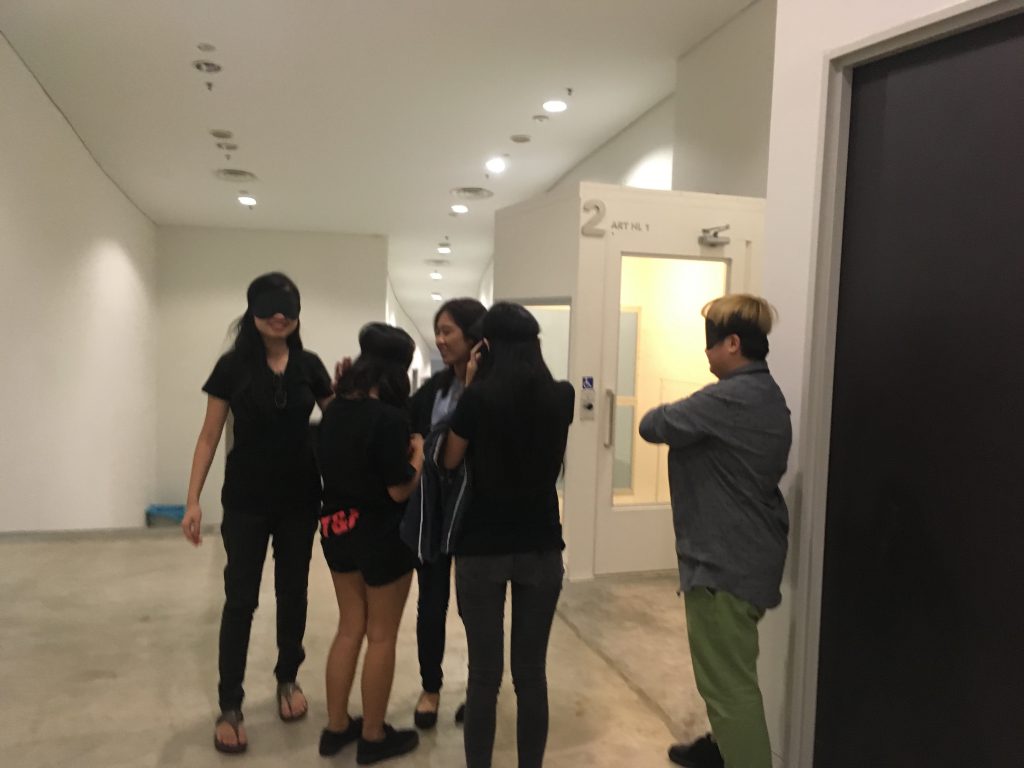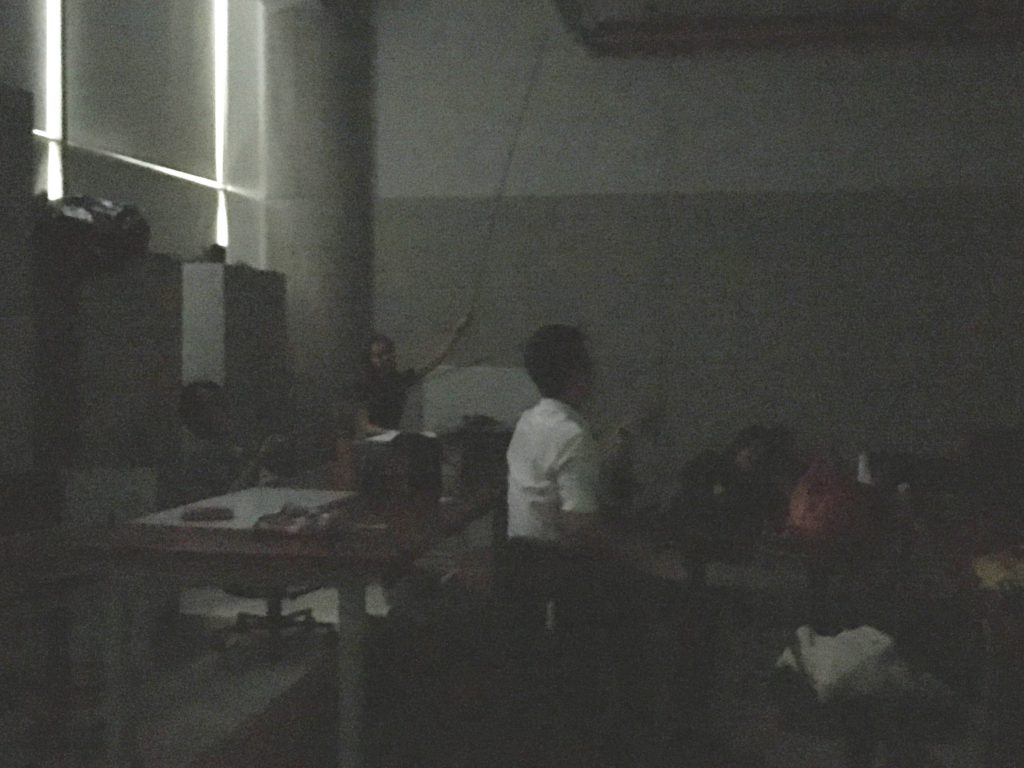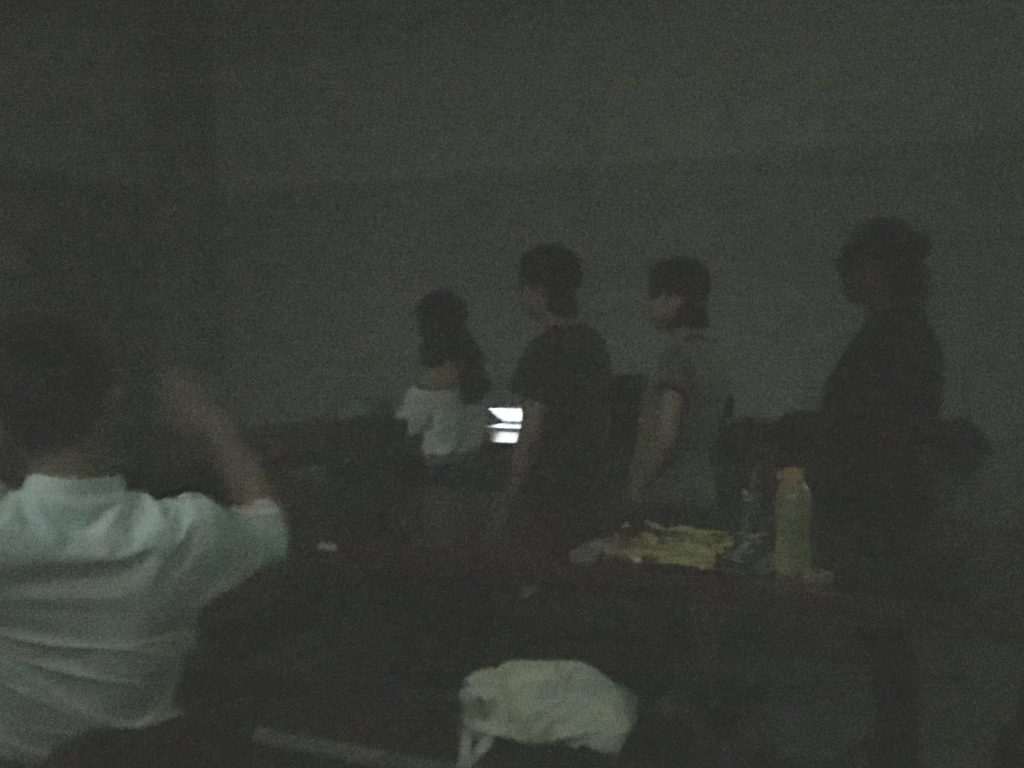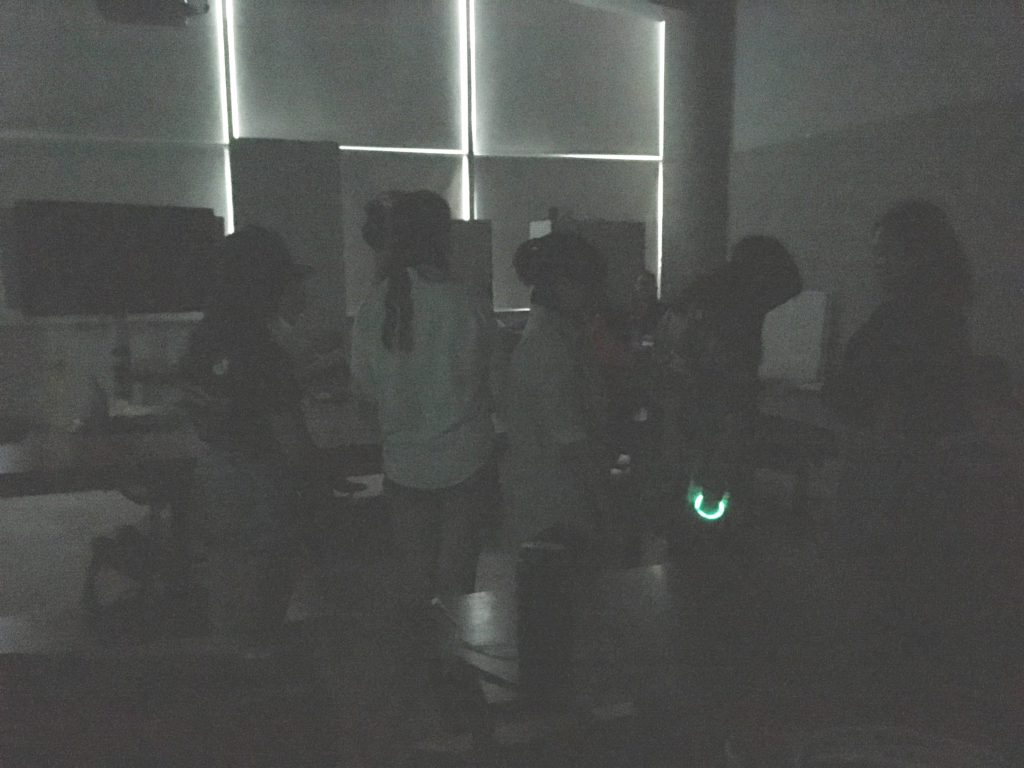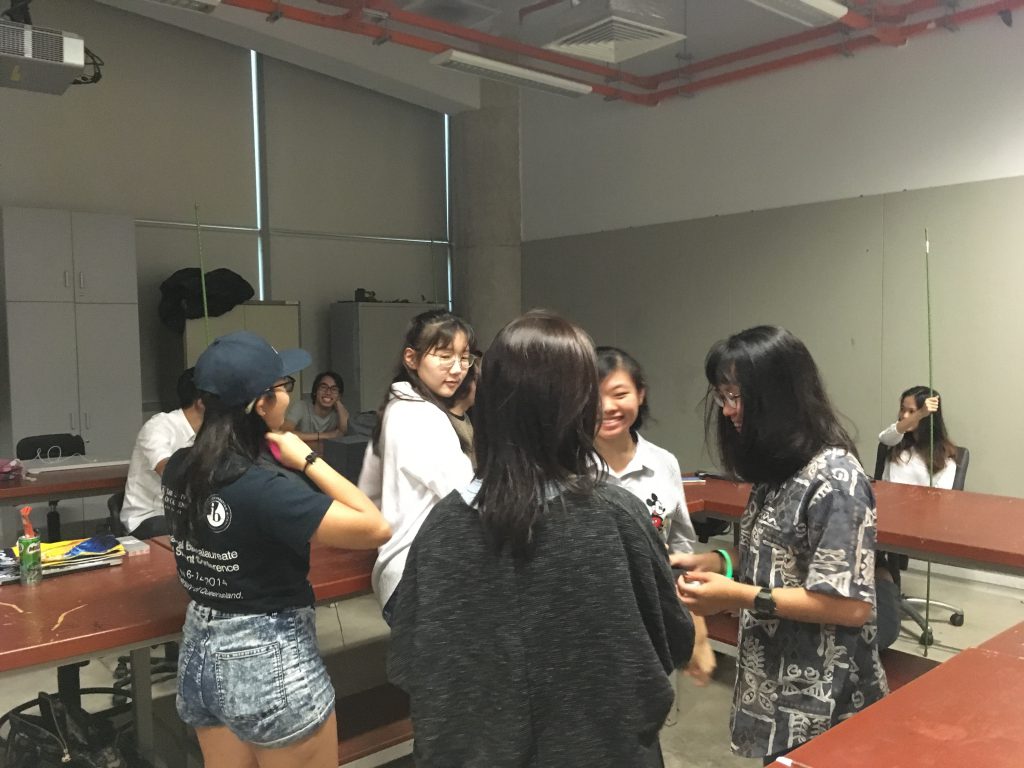By Charlotte and Lee Hwa
Project Proposal
This project is an interactive soundscape installation that allows participants to experience a series of sounds that are built-up progressively through overlapping and layering techniques to evoke anxiety. This installation is created to show that participants are able to experience anxiety using solely the sense of hearing instead of the commonly paired senses of sight and hearing (Horror Films) or hearing and touching (e.g. Haunted Houses).
This installation would have participants placed within a brightly lit confined space, blindfolded for 2 minutes. The created space would be empty, with just only a stereo speaker in place for projection of the soundscape. Participants will be split up into smaller groups of four to five people each for maximum experience and asked to put on blindfolds to remove their sense of sight. They will then be guided by the curators to the installation space to experience the soundscape. Once the soundscape ends, participants will be asked to remove their blindfolds so that they can see the space and realise that all the while they were in empty space with nothing but just a soundscape playing in the background; realise that one is able to experience anxiety with just his sense of hearing. Participants will be allowed to stay on and quiety observe the rest of the participants’ experience and all will be invited to share their afterthoughts of the installation experience at the end of the session.
The anxiety-evoking soundscape would be made up of sounds produced and recorded by the foley technique or copyright-free sounds found online. Also, the reason for allowing each group that has experienced the installation to stay on is because alternatively, they can use found objects around them to help contribute to the soundscape they hear. This brings about interactivity in terms of role reversal – From participant to having a reign over the creation of sounds. Overall it is a soundscape created by repetition. Based on David Sonnenschein’s seven categories of sound, the sounds used in the soundscape will be soft to loud in intensity, slow to fast in speed, tonal in timbre and reverberant in shape. The interactive component comes in where participants get to interact with the space as they are able to move around freely while experiencing the installation. Alternatively, they can choose to stay in the same spot; it is up to them on their next move.
Process
Research & References/Material Samples
These were two soundscapes we chanced upon on youtube and used them as reference and inspiration for ours thereafter. For the idea of repetitive sounds in the soundscape:
For the idea of building up on speed of the sounds (fast and slow) in the soundscape:
Inspiration for the ringing noise:
A scene from the movie Saving Private Ryan that we viewed in class where at that one particular moment, the noises become muffled. In the case of our soundscape we got inspired to introduce a high ringing frequency noise. Another reference we had when creating our soundscape for the installation is a sound artist whom Lei suggested to us to check out to get an idea of working with surround sound for our sound installation: Janet Cardiff & George Bures Miller – The Murder Of Crows (2008) http://www.cardiffmiller.com/artworks/inst/murder_of_crows.html Some of the sound excerpts from the installation:
Challenges Faced
We intended to book a four-walled space initially and these are the places we had in mind ranked in order to match our ideal set-up that was submitted in our original project proposal.
- Empty space outside 2D Animation Lab (ART B1-4a)
- The next backup location would be the meeting room on Level 4
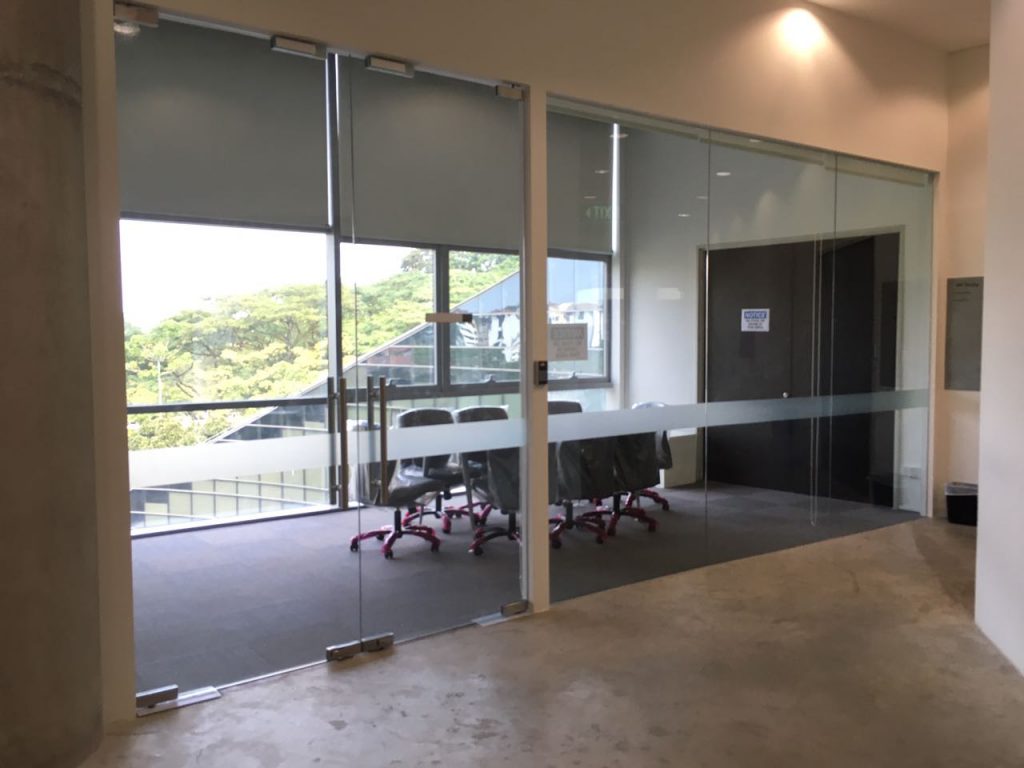
- Lastly, our Foundation 4D II Classroom (ART 02-23A) as a last resort
But you know, we eventually settled for our last listed location. Our 4D II Classroom we use for weekly classes only because when we wrote in to check the availability of location we did not get a reply. Not sure why though but settling with the classroom turned out for the better for so many reasons, logistics especially. We made use of the classroom to create a more confined installation space rather than using the whole class space. Mainly for safety precaution as participants would be blindfolded it would be less hazardous if they are kept in a smaller area with obstacles cleared. The
“confined space” as seen below.
We tested out our installation according to our original set-up prior to installation day and here was how it looked like as a scale drawing:
Here’s the documentation of our test trial. We had 3 of our friends who very so kindly spared us a little of their time to help us test out our installation, whether the soundscape had any effect and if the installation space worked.
For the test trial we used just normal bluetooth speakers that didn’t have the surround sound effect so feedback from our friends was that it would be good if we could use stereo speakers instead, like the one in the classroom. Great thing was we happened to find a portable one that was placed below the television set in class and we need not go through booking procedures to use it. The sound system was awesome. The reverb was amazing and the soundscape effect was much stronger.
The soundscape wise, they suggested to make it less monotonous in a way that the one we originally tried out on them sounded very flat. There wasn’t much sounds that would make them anxious, the loudness and softness of the sounds in the soundscape could be more varied and also the ringing noise towards the back could be more intense. There was also suggestion for us to carry out the installation in total darkness as when they put on the blindfolds, they can still vaguely see the light source from below; being in total darkness helps build up the anxiety emotion.
Execution
How the sounds were created:
Our idea for soundscape was to create a tonal background contrasting with a high pitch sound to evoke anxiety. Foreground sound is created by hitting against the stairs rail that moves away from cliche Anxiety soundscape that utilises heartbeat or breathing. Our background tonal sound was created through garageband, that starts from a high note to a lower note. We then overlay it with the sound we recorded from the stairs, the reason why we chose the rail is because of the reverb that it produce and contrasting it to a low tonal background would create a tension. Further editing was then done in audacity.
Additionally to have a more immersive soundscape, we edited the sound perspective to give the feeling on the sound coming closer and to the back, the speed is also increase to build on the tension. We also added a ringing sound as to break away from repetition sound pattern, which helps to intensify the entire sound at the back.
The day of installation:
What went well: The impromptu decision of having the front groups of participants stay on to help contribute to the live sounds using found objects made the soundscape sounded even more real and thanks to the favourable weather conditions that day (it was raining). That made the installation space really dark and the extra sounds made by the thunder added on well to the reverb of the soundscape which really helped us achieve the emotion we wanted to evoke through our soundscape, anxiety as most felt fear which is an emotion linked to that. Our initial plan was to have participants stay on so that they do not return to the holding space and discuss it with the rest who haven’t experienced it. It would have spoiled the anticipation and also it would have been too boring just to sit there and observe the rest so why not contribute to their experience?
Some documentation of our installation: Before entering the installation space – giving instructions, leading the way
During the installation – the experience, interactivity between participants and the installation (contributing to the soundscape using found objects in the room)
Pardon our blurry and pixelated images (after editing) as this was the best we could get for our installation that happened in total darkness. Video footage wise it was way worse, nothing could be seen only the sounds can be heard thus we settled for image documentation this time round on the official installation day.
What could be better improved: We should have worked out a way such that all groups would be able to experience role reversal interactivity bit of the installation plus have the live sounds created be equal across all groups for a fair experience of the installation. For our case of execution we could have personally added the live sounds for the first group.
Overall, we felt that working with sounds for an installation to begin with is already a challenge what more creating sounds to evoke a particular emotion without trying to go for the narrative style/flow. This soundscape in particular as the emotion we were trying to evoke from participants was anxiety which could seemingly fall under as a sub-emotion under bigger emotions such as depression, stress etc. How one interprets a sound that they hear is very subjective but we think we managed to pull it off thanks to our classmates’ live sound contributions, our impromptu decision and of course the gloomy weather that day which made the atmosphere even better. Even though the deadline was tight, and the stress levels were high especially when it came to logistics, it was still a fun project to work on an explore!

